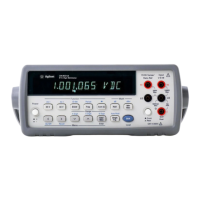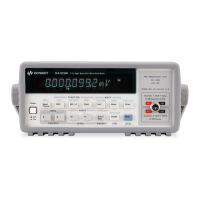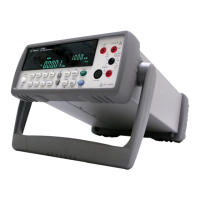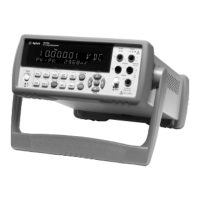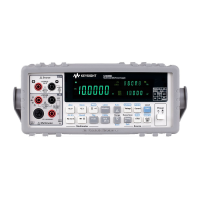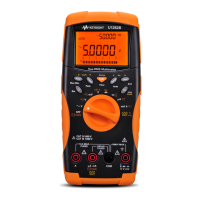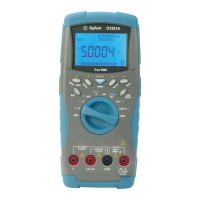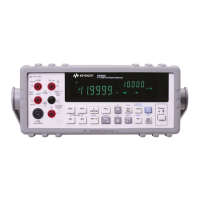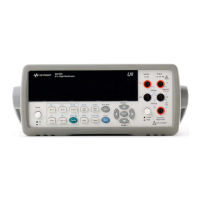Chapter 6 Command Reference 177
ERR?
ERR?
Error Query. When an error occurs, it sets a bit in the error register and
illuminates the display's ERR annunciator. The ERR? command returns a
number representing all set bits, clears the register, and shuts off the
annunciator. The returned number is the weighted sum of all set bits.
Syntax ERR?
Error Conditions The error conditions and their weighted values are:
Remarks • The ERR? command returns a 0 if no error bits are set.
• If bit 0 is set (weight = l), refer to the auxiliary error register (AUXERR?
command) for more information.
• Executing the ERR? command clears the status register's error bit (bit 5).
• Related Commands: AUXERR?, EMASK, ERRSTR?
Example 10 OUTPUT 722;"ERR? " !READS & CLEARS ERROR REGISTER
20 ENTER 722;A !ENTERS WEIGHTED SUM INTO VARIABLE A
Weighted
Value
Bit
Number Error Conditions
1 0 Hardware error (see AUXERR? for more information)
2 1 Calibration error
4 2 Trigger too fast error
8 3 Syntax error
16 4 Command not allowed from remote (ADDRESS
command)
32 5 Undefined parameter received
64 6 Parameter out of range
128 7 Memory Error
256 8 Destructive overload detected
512 9 Out of calibration
1024 10 Calibration required
2048 11 Settings conflict (memory improperly configured for
sub-sampling)
4096 12 Math error (divide by 0, integer overflow, etc.)
8192 13 Subprogram error (calling a deleted sub, CONT with no
PAUSE, SUBEND, or PAUSE only allowed in sub,
SCRATCH, DELSUB, CONT, not allowed in sub)
16384 14 System error
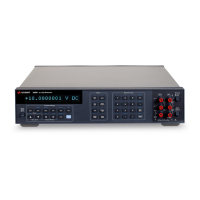
